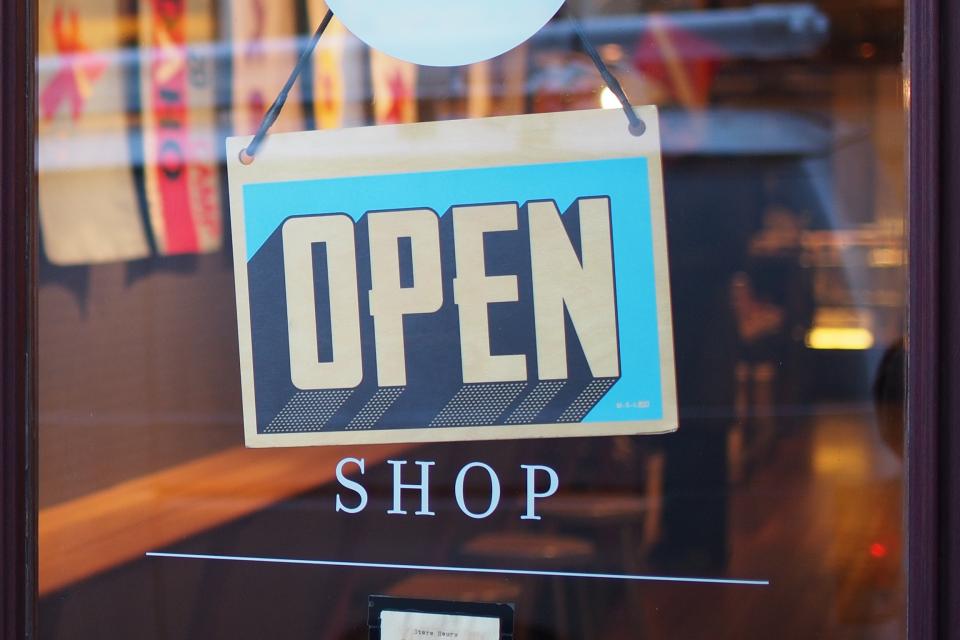
Picture this: You’ve just about closed a sale, and the shopper made up their mind to buy a product. What do you do?
Do you ring up the sale and send them on their way?
Or do you try to find opportunities to increase their basket size?
If you picked the first answer, chances are you’re leaving a lot of money on the table and need to think about how you can increase add-on sales.
Two of the best ways to do this is through upselling and cross-selling. Just to get our definitions straight, cross-selling means recommending a product relevant to the one that’s already in their basket. An example would be recommending a matching wallet to a purse that the shopper is buying. Upselling, on the other hand, means offering a pricier version of the item. Think of it as asking the shopper if they want to upgrade their purchase.
Done right, both tactics enable you to increase sales while helping customers at the same time.
The key to upselling or cross-selling success is doing it properly and at the right time and place. If you upsell a product that’s irrelevant or if you’re selling in such a way that you’re coming off as pushy, then you’ll not only fail to convert the customer, but you might even lose the original sale.
The #1 rule here is to always provide value. Yes, getting someone to upgrade their purchase or to buy an additional item will benefit you, but the deal must also be advantageous to the customer.
Ask yourself the following before delivering your spiel:
1. Does the product complement the item that the customer is buying?
Upsells and cross-sells only work when they’re relevant to the original purchase. When you’re upselling or cross-selling an item, see to it that it’s a) a better version of what they’re buying or b) a product that goes with their purchase.
2. Will this product really benefit them?
Sometimes, an add-on item may complement another product, but it won’t benefit the customer. For example, while a certain type of lens may go with that camera your customer just bought, it wouldn’t be a good cross-sell if they don’t have a need for it.
Get to know the customer before selling them more merchandise. Ask how they’re going to use the product, then if you have items that would benefit them, go ahead bring them up.
3. Are they open to spending more?
If the customer has made it clear that they’re on a budget or they’re only after one product, then respect their wishes and don’t try to sell them anything else. You might send them packing if you insist on upselling or cross-selling.
If you answered “Yes” to all three questions, then you can proceed to suggest upgrades or additional products. And to help you close more sales, here are some proven pointers you can incorporate into your strategy.
Make customers *see* the value or benefit that they’re getting
Listing out features or specs rarely seals the deal in sales. This is because the human mind is more responsive toward stories or images. To effectively upsell or cross-sell something, you need to make people see the value or benefit of the purchase.
If you’re an apparel retailer, and you’re cross-selling items that would go with the piece that a customer is buying, why not show them real outfits that showcase the different items?
One retailer that does this well is Red Dress Boutique. Their product pages have a “Complete Your Look” section that displays all the other items that the model is wearing.
In some cases, shoppers don’t have to literally see value in order to make a purchase decision. You can enable them to picture or imagine certain benefits by telling stories.
For instance, many computer and electronics shops are able to sell extended warranties or insurance because they can vividly illustrate a situation in which such purchases would come in handy.
The associate could tell the story of the guy who accidentally dropped their phone and had to shell out hundreds of dollars to fix it because he didn’t have insurance.
In doing so, the retailer is making the customer see (in their mind’s eye) the benefits of purchasing insurance or extended warranties.
Consider applying this strategy in your store. Be more vivid with how you sell your products using stories or real-life examples.
Consider following the “Rule of 3”
When you’re upselling, see if you can apply the “Rule of 3” in your efforts. This means giving the shopper 3 options for their purchase. Jennifer and Danila, the co-owners of Convey boutique in Toronto, call these three options the Requested, the Alternative, and the Dream.
“The Requested is that starting line or price point. It’s accessible, easy to wear, and something that may be dressed up or down,” says Daniela. “The Alternative is something that still relates to the Requested but maybe at a more mid-price point. Then the Dream is one of our personal favorites, one that we know they’re going to love, and something that may have a higher price point.”
According to Jennifer, when selling the Dream, they aim to educate the shoppers as much as possible. “We love to talk about who our designers are; their names, where they’re from, what they like to do, what inspired the collection… it really builds trust and creates that experience with our customers where they feel proud to own the pieces that they take home.”
That said, being genuine is key. As Daniela puts it, “when upselling, you always want to remain genuine. I think that in order to create the best experience, we would never want to put the client in something they feel uncomfortable in. [Similarly,] we would never want to only show them pieces outside their price point. The key is to play to your audience and always be genuine with your approach.”
The Rule of 3 can also be applied in cross-selling. In Convey, for instance, Jennifer and Daniela try to ensure that customers walk into the fitting room with at least three items. They accomplish that by recommending products that complement what a shopper wants to try on.
“Let’s say a customer is drawn to a white silk blouse. I would show her similar blouses so we’ll have different styles in the fitting room,” shared Daniela. “Or we’ll pair it with denim, footwear, and accessories to really help that customer envision the outfit, not only in the store but when they leave.”
Don’t go overboard with price points
A key point when it comes to cross-stelling is to “be reasonable,” notes The Retail Doctor, Bob Phibbs. In this excellent post on cross-selling, he writes:
If a customer buys a $500 blazer, it makes sense to suggest a $50 tie; but if a customer buys a $50 tie, don’t try to sell them a $500 blazer. The suggested item shouldn’t exceed more than a certain percentage of the cost of the original item. Some put this figure at 25%, while others have a different number. You’ll find what works for your customers. Instead of that blazer, how about a nice $20 set of brass collar stays?
This can also be applied to upselling. Get a feel for what a person is looking for and how much they’re willing to spend before offering the most premium option.
Consider what many airlines of doing. Many airlines offer upgrades but do so in certain increments. When someone books a trip in economy class, for instance, the airline may ask if they’d be interested in more legroom or in premium economy. What they don’t do is push the traveler to upgrade to first class.
Reward customers for the added purchase
Giving away a reward or incentive can increase your upsell/cross-sell conversion rate. Consider what many ecommerce sites are doing. To encourage people to buy more, they often throw in free shipping if the shopper spends above a particular threshold.
If you’re a brick-and-mortar store or if you’re not keen on giving away discounts when you upsell, perhaps you can incentivize shoppers with a free gift instead. Nordstrom, for example, is giving away a free Clinique moisturizer every time shoppers buys $55 worth of Clinique merchandise.
Use round numbers when appropriate
While ending prices with the number 9 or 7 has proven to increase sales for some products, this tactic doesn’t always work when you’re upselling or cross-selling. Consumer psychologist and retail consultant Bruce D. Sanders says that whole numbers convert better when you’re suggesting an add-on sale for the first time.
“For the first upgrade decision, they’re more likely to choose the higher-priced alternative when the prices for two are presented as round prices instead of as just-below prices. So if the prices on the bin tags are $19.99 and $29.99, the salesperson says, ‘For only $10 more, here are the additional benefits you’d get.’
The easy comparison facilitates acceptance of the upgrade.”
Remember, it’s not what you say, it’s how you say it
“It all comes down to a simple, though often-overlooked concept: It’s not just what you offer, it’s how you present it,” says Aron Ezra, CEO of OfferCraft, a software company that uses games and rewards to make offers and employee incentives more appealing.
“For example, instead of the sales associate saying, ‘Would you also like to buy a $20 tie with your $40 shirt?’, imagine she says, ‘The shirt comes with your choice of one of these ties… You can take any of these, or you can give back the tie to reduce the price.’
Instead of deciding to make an additional purchase, this customer is now asked to actively give up the tie, which he is more likely to feel bad about doing,” Ezra continues.
Keep this in mind when you’re coming up with sales spiels and tactics. If a particular offer isn’t giving you great results, revise your approach and see how customers react.
Final words
There’s more to upsells and cross-sells than just pitching add-on products. To successfully close sales, you need to get in the minds of shoppers. Figure out their needs and motivations, and then craft your approach accordingly.








